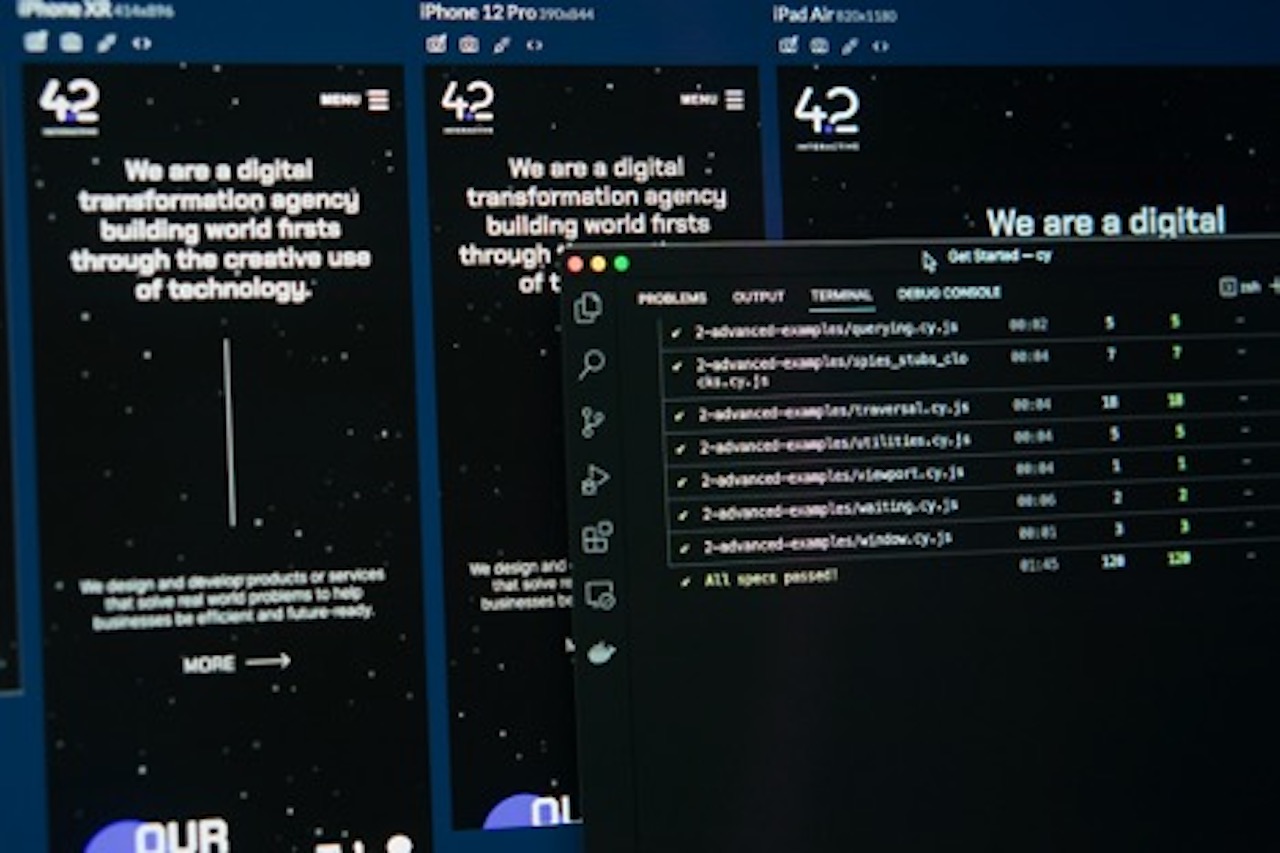Software testing is an important part of software development. Many businesses now outsource software testing to another company, either locally or internationally. This is common practice in the IT world.
Quality assurance (QA) testing means making sure a product is of the highest possible quality, by preventing issues when it’s being used, and also providing a great user experience for customers.
Quality assurance, software testing, and test automation are crucial phases in the SDLC process. Numerous factors can contribute to the failure of a projects, but one recurring issue was a disregard for software quality.
Regardless of the size of your business, a software testing services company is important if you are getting ready to release a new app or a hotfix for a software. Through software testing, the release cycle can be completed much faster. A QA can help detect any code flaws, bugs or errors and get them fixed by the developer team before it is released to your customers.
It’s important for businesses to do their research when choosing QA consultancy services to avoid a variety of project quality problems. These can include improper testing methods and a weak overall project test execution process.
By taking the time to find a reputable and experienced service, businesses can ensure that their projects are in good hands.

Source: https://unsplash.com/photos/pypeCEaJeZY
Understanding your Business Needs
Quality assurance is a process that is unique to every software development project. However, every team member should be focused on quality assurance in order to save money, time and frustration.
A product that is not properly tested can result in damage to the customer’s trust and the business brand. Quality assurance is important for any organisation that wants to be successful. Everyone in the organisation should be focused on quality assurance and committed to it.
Below are some key points for best practice in choosing your QA work:
- Quality should be aligned with the organisation’s goals and initiatives to ensure that the business can gain management’s commitment to focus on quality at a higher level.
- It is important to assign a quality function owner to establish a baseline for a strong quality group. This group should have clear responsibilities, authority, and resources to monitor quality-related activities within the organisation. This will help ensure that quality standards are met and maintained.
- Quality experts and quality managers play a vital role in ensuring quality by creating standardised tools that help conduct a detailed analysis and reporting to achieve continuous improvement.
- Quality standards always need to be updated to reflect the latest and greatest expectations. Product managers are responsible for making sure that these guidelines are followed and enforced.
- Business unit leaders should be the ones setting performance targets for enterprise quality measures, and they should report quality-related data in the agreed time frame. This will allow them to have a better understanding of what needs to be done in order to improve quality and meet targets.
- Quality data collection can be a tedious and time-consuming process, but with the right tools, it can be automated relatively easily. Look for a tool that has a dashboard with 360-degree view capability to get an overview of all your data in one place.
- Quality measures should be refocused both throughout the value chain and the delivery process to meet customer expectations towards the product.
- Train new team members on basic quality management principles, and provide everyone in the organisation with direct access to quality data. This will help everyone make informed decisions and ensure that quality is always a top priority.
Assessing QA as a Service Providers
In today’s digital age, software is essential to nearly every facet of business and life. As a result, software companies must guarantee that their code in the application software meets the highest standards of quality, efficiency, and security to keep customers’ trust.
In order to achieve this, application testing is the most important activity in the development process. Even a small bug can result in a loss of reputation, which will also cause financial loss to that company.
With today’s software development environment, businesses will face software issues more often. Many software developers compete using limited resources, which can cause quality testing to be overlooked.
This can lead to serious problems and failures of safety-critical programs. By properly testing software, businesses can prevent these issues from occurring.
With so many businesses providing poor customer service and suffering data breaches, it’s no surprise that quality assurance as a service (QaaS) is on the rise. QaaS allows businesses to outsource testing to managed software test providers (MSPs), which can improve organisational agility by allowing both internal and external teams to move between projects more rapidly.
Managed service providers [MSPs] can save businesses money by handling testing on demand, freeing up internal resources for more strategic tasks.

Source: https://unsplash.com/photos/CXklL5ca71w
Defining Service-Level Agreements
QaaS options are attractive to businesses because they take the burden of testing off of the development team. However, it is important to have a Service-Level Agreement in place between the quality team and the development team to ensure that everyone understands the expectations and responsibilities of each party.
In software development, it can be challenging to balance quality, ownership, and accountability. The best way to improve ownership and accountability is to have an SLA in place that ensures everyone is on the same page when it comes to quality goals, engagement, services, and expected outcomes. This way, everyone knows what they need to do and there is less room for error.
The communication of the SLA is critical because it establishes a clear understanding of services, priorities, responsibilities, types of activities, guarantees, and warranties provided by the service provider.
Testing is a essential part of the success of any software development project. The SLA is the agreement between provider and customer to protect both parties in the event that disputes arise and to avoid misunderstandings about quality ownership. The SLA can save time and money for both the provider and the customer.
Ensuring Data Security
Data management is a broad term that covers a lot of different disciplines, from organising and storing data to maintaining it. The standards for good data security can vary depending on the requirements and the nature of the data itself.
That’s why it’s important to be able to accurately identify your data and its sensitivity level.
When working with a QaaS provider, it is important to follow best practices to prevent breaches. Below are some tips:
Identify
It is critical to know precisely the type of data being stored in order to protect it effectively. The security team should gather all sensitive data and classify it based on its value to your organisation. This will help ensure that the most important data is properly protected.
Data Usage Policy
Developing a policy that defines the types of access is the next step. Restrict user access to certain areas and remove the access when it is no longer necessary. It is necessary to implement strong repercussions for all policy breaches.
Monitor
Ensure that you limit access to information based on people’s roles. This way, you can be sure that only the right people are using the data.
Safeguard
When you lock down your workstation when you’re not using it, you’re safeguard the components being used to store data. This helps prevent unauthorised access to sensitive information and keeps your data safe.
Use Endpoint Security Systems
By setting up a robust infrastructure, you can minimise the chances of a breach occurring. Endpoint security includes both physical and logical security measures, so be sure to implement both in order to fully protect your data.
Document Cybersecurity Policies
It’s important to document all cybersecurity best practices, policies, and protocols carefully. This can be helpful when providing online training, checklists, and specific information to employees and stakeholders.
Implement a Risk-based Approach to Security
A risk-based approach is like a insurance policy for your organisation. It helps you comply with regulations and protects your organisation from potential leaks and breaches.
Educate Employees
Make sure to keep all employees up-to-date on new security protocols and changes. For example, provide real-life examples of security breaches and ask for feedback on the current security system. This will help ensure that everyone is on the same page when it comes to keeping the workplace safe and secure.
Multi-factor Authentication
Multi-factor authentication [MFA] is like an extra security guard. It will protect your data by making sure that only authorised people can access it. MFA is especially important for sensitive information, like medical records or financial data.

Ensuring Transparency
There are a few key factors to consider when choosing a QaaS providers in order to guarantee transparency. They are as follows:
I_ndustry Knowledge_
A company’s ability to understand your specific needs and deliver results quickly are determined by its experience in similar projects or industries.
Background Check
It is crucial to do your due diligence when investigating a potential seller. Make sure to check out their clientele, reviews, and see if they have any repeat customers. This will give you a good idea of what you can expect if you decide to do business with them.
Clear Service Level Agreement (SLA)
A well-defined SLA provides a roadmap for the project as a whole, including key dates, milestones, and a description of the project. It can be enforced legally to protect both parties, and it provides guidance on how to proceed in specific circumstances.
Domain Knowledge
If a testing consultancy partner with many resources but little areas of expertise get chosen, the delivery schedule of a project will greatly suffer.
Secure Channels for Data and Intellectual Property Transfer
One of the most important factors to consider when choosing an outsourced software testing firm is IPR protection. The company you choose must safeguard the supplied Personally Identifiable Information (PII) and ensure that it is not used for any other purpose than the intended purpose.
Scaling and Flexibility
A QaaS is able to provide testing services that are very specific in nature, utilising a particular in-house team with a specific level of expertise in various areas of quality assurance. A QaaS can offer greater flexibility and scalability, as the QaaS provider can quickly ramp up or down resources as needed or add more or reduce QA activities to meet the changing demands.
QaaS can provide your business with access to specialised areas of expertise, such as automated testing, performance testing, or security testing, at a lower cost than hiring a dedicated in-house team. Furthermore, QaaS can help to reduce the risk of defects or errors in the end product, as the QaaS provider can bring a fresh perspective and identify issues that may have been overlooked by the in-house team.
Contract Agreement
QA is vital to making sure that what you’re delivering meets the agreed standards. It’s a process of checking, testing, and verifying the quality of products or services throughout the development process. By catching errors early on, you can save yourself a lot of time and hassle down the line.
Therefore, it is important to establish the quality requirements and expectations for all parties involved in the contract, as well as setting up a quality management system. This system should cover the quality processes, tools, and resources needed for the contract. Furthermore, regular quality assessments and evaluations should be conducted throughout the contract lifecycle in order to ensure that everyone is meeting the established standards.
It’s important to communicate quality results and feedback to all relevant parties, and to document any quality issues and actions taken. Then, you need to implement and monitor quality improvement initiatives, and track the resulting performance and outcomes.

Source: https://unsplash.com/photos/FlPc9_VocJ4
Conclusion
In the rapidly moving IT world, especially for startup companies, it can be tempting to try and do everything on your own. However, this will only increase costs, time, and resources. A simpler method is to take advantage of QaaS in order to see more profitable outcomes, such as high-quality software and great customer experience.
Our QA teams at 42 Interactive have the knowledge and experience to help you with your SDLC process. Contact us today to find out how we can help you.










